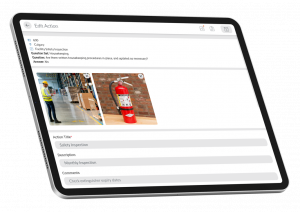In our last blog, one of the first points we mentioned was the need to establish clear and realistic goals. Establishing goals for the safety program provides a vital blueprint for managing the organization’s resources to achieve the desired outcomes. The most commonly found goals in any safety and health program include lost-time injury rate, lost workdays, recordable injury rate, and total injury rates. Safety goals can also be vague, however. When establishing goals, it is important to identify those measures that are indicative of a good program. They must emphasize activities that are needed to meet the goals. A common downfall is to develop broad-ranging goals with no clear understanding of the activities that impact the outcomes, which in turn determine whether or not the goals are met. The best results for a metrics program can be achieved when the goals set are appropriate. The following are some examples of poorly constructed and well-constructed safety goals and objectives:
Poorly constructed safety goal: ‘‘Improve the safety record of the organization.’’ This is considered a poorly written safety goal since it doesn’t establish a time frame for completion. It also doesn’t provide a specific outcome that is indicative of the goal being met.
Well-constructed safety goal: ‘‘Over the next five years, the organization will reduce OSHA recordable injuries by 10 percent.’’ This is considered a well-constructed safety goal because it establishes a fixed, long-term focus for the safety program. The desired outcome for the goal is also measurable.

Poorly constructed safety objective: ‘‘The organization will increase employee safety training offerings.’’ This is considered a poorly written safety objective since it doesn’t establish
a time frame for completion. It also doesn’t provide a measure by which success or failure of meeting the objective can be ascertained.
Well-constructed safety objective: ‘‘During this fiscal year, the organization will provide twelve-monthly safety-training programs at which 90 percent of the employees shall attend.’’ This is considered a well-constructed safety objective because it establishes a fixed, short-term focus for the safety program. The desired outcome for the goal is measurable
To develop an effective safety metrics program, the objectives of the organization must be clearly established. Business objectives typically state and define any underlying organizational ‘‘values’’ and quality factors such as safety, environmental soundness, and customer satisfaction. The development of these business objectives usually begins with the stated mission of the organization. The mission statement will provide the overall guidance not only for the safety program but also for any other program developed to meet the organization’s goals and objectives. While the business side of the objectives may be stated in terms of productivity, costs, or profits, safety objectives can be stated in terms of losses, accidents, safe behaviors, or increased costs.
For more on Certainty Software, click here.



